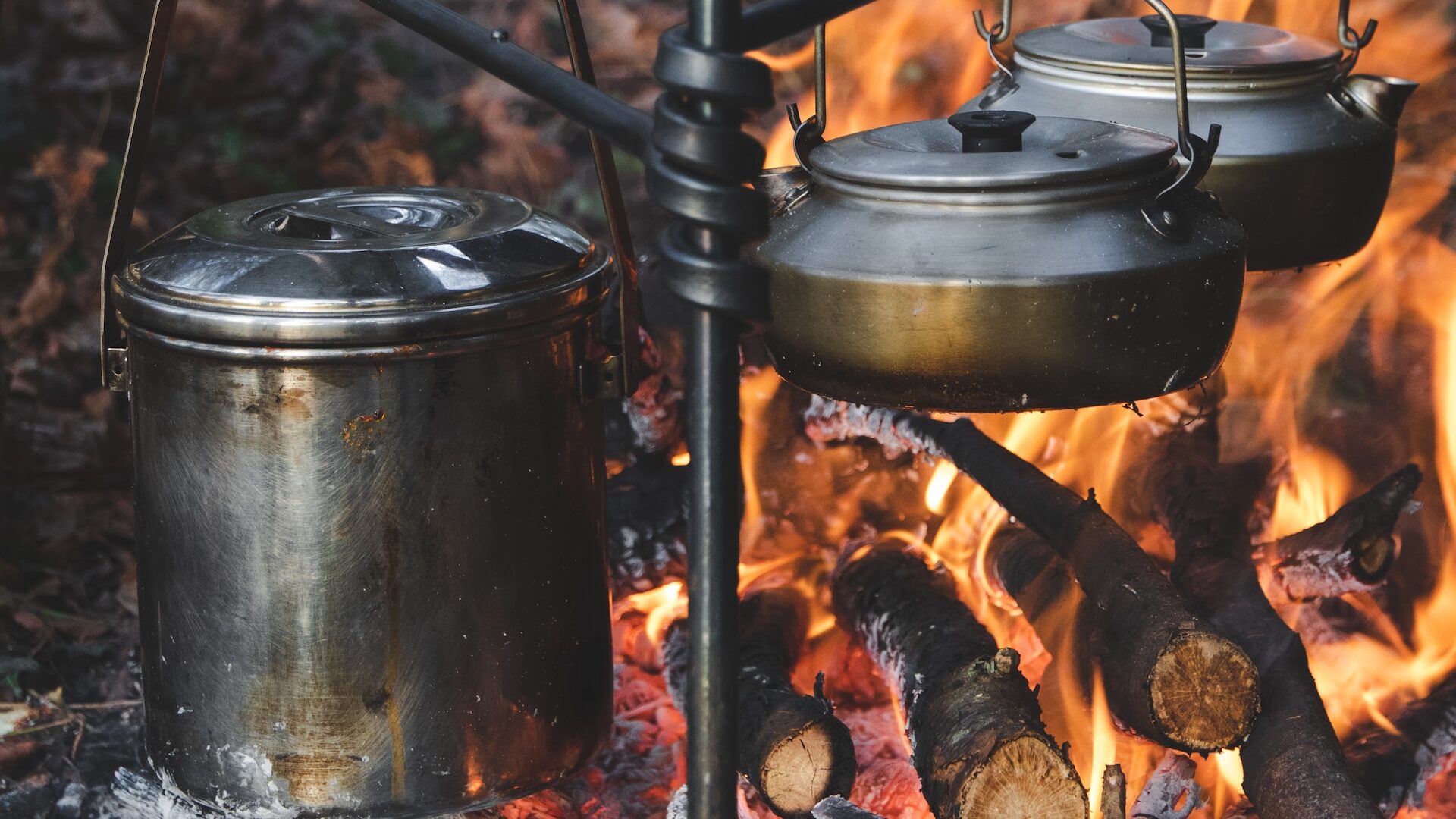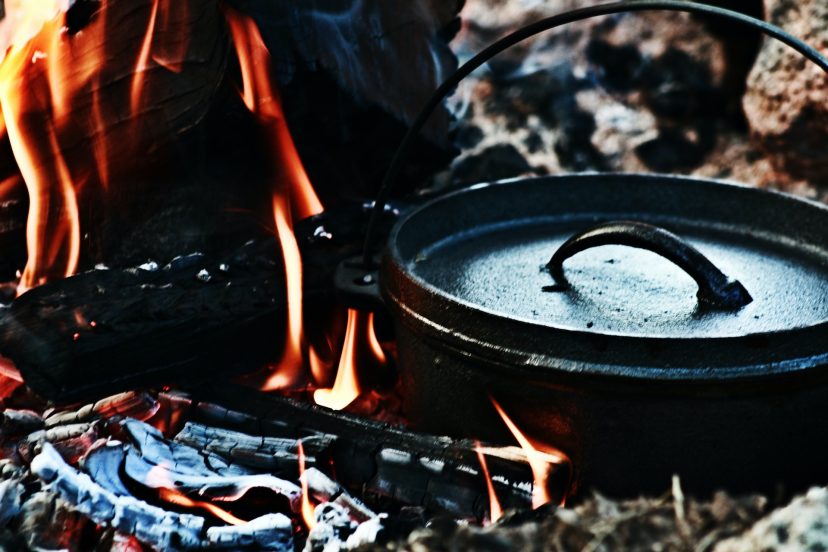Outdoor Cooking Pot: Find Your Perfect Camping Cookware
You know, an outdoor cooking pot is your reliable partner in crafting meals with memorable experiences in the wilderness. Whether it’s bubbling with a hearty stew that warms you on a chilly night or boiling water for that uplifting morning coffee, it’s your trusty companion on your adventures outdoors.
Why Opt for Specialized Outdoor Cooking Pots?
The Issue with Regular Pots
Using your regular pots for camping? It might not be the best idea. Traditional kitchen pots can pose a bunch of problems when used outdoors. They’re usually too heavy and can be a hassle and a burden on hikes and treks. When you’re packing for a camping trip, every ounce of weight matters.
Additionally, the material of a regular pot might not stand up to the wear and tear of outdoor use. Camp cooking involves exposure to open flames and potentially being scraped and bumped during transport – things that your home pots aren’t necessarily designed to handle. Therefore, specialized outdoor cooking pots, which are designed with lightweight materials, efficient heat distribution, and durability to withstand the outdoor conditions are a better choice.
Choosing Your Outdoor Cooking Pot
Your Camping Style
Your choice in a pot can make or break your camping experience. Tailoring your cookware to your camping style is important.
Backpacking: Think light, compact, and multi-functional. Titanium or aluminum pots with folding handles might be your best pals.
Car Camping: Here, weight isn’t a pain point. You can afford the luxury of sturdy cast-iron pots that offer unmatched flavor and heat retention.
Family Camping: Larger pots with higher capacity are key. Consider non-stick pots for easy meals or a large aluminum pot to cater to all hungry mouths without breaking your back.
Solo Trips: A small, durable pot (perhaps a single-wall mug-pot hybrid) would suffice, saving space without compromising utility.
Easy Clean Options
We all would rather gaze at the stars than scrub pots, right? Opting for easy-clean pots will gift you that extra leisure time in nature.
Non-Stick Coating: A non-stick pot can be wiped clean with a paper towel or lightly scrubbed with minimal effort.
Smooth Surfaces: Pots without ridges or grooves prevent food from sticking in hard-to-reach spots.
Rust-Free Materials: Pots made of stainless steel or with a rust-resistant coating spare you from tedious scouring.
Dishwasher-Safe (for RV Campers): If you’re RV camping with access to a dishwasher, pots that can handle a machine wash are a breeze!
Material Pros and Cons
| Material | Pros | Cons |
| Aluminum Pots Amazon Recommendation: REDCAMP 11/12/22 PCS Camping Cookware Mess Kit | Light: Easy on your back. Heats Fast: Quick meals ahead. Wallet-Friendly: Nice for tight budgets. | Less Durable: Might not endure rough use. Reactivity: Certain foods might taste a bit metallic. |
| Stainless Steel Pots Amazon Recommendation: Camping Cookware Set – Compact Stainless Steel Campfire Cooking Pots and Pans | Sturdy: Survives a few knocks and bumps. Even Cooking: No half-cooked, half-burnt meals. Low Maintenance: Easy to clean and rust-free. | Heavier: You’ll feel it in your backpack. Heats Slowly: Requires a bit more patience. |
| Titanium Pots Amazon Recommendation: Boundless Voyage Titanium Hanging Pot for Outdoor Camping | Featherlight: Your back will thank you. Resilient: Stands up to corrosion. Tough: Yes, it’s strong as it sounds. | Costly: A bit of a splurge. Hot Spots: Keep an eye on your cooking to avoid burns. |
| Cast Iron Pots Amazon Recommendation: Bruntmor Camping Cooking Set Of 7. Pre Seasoned Cast Iron Pots And Pans Dutch Oven With Lids For Outdoor | Retains Heat: Keeps meals warm for latecomers. Adaptable: Cook in various styles. Long-Lasting: Treat it right and it’s forever. | Heavy: Not the best for long treks. Needs TLC: Regular seasoning and dry storage. |
| Non-Stick Pots Amazon Recommendation: Odoland 29pcs Camping Cookware Mess Kit, Non-Stick Lightweight Pots | Easy to Use: Flip pancakes with ease. Cleans Easily: A wipe often does the trick. Uses Less Oil: A nod towards healthy eating.Cons: | Wears Down: The coating won’t last forever. Sensitive to Scratches: Watch those utensils! |
Design Features
Lids: A tight-fitting lid keeps all the good stuff in and unnecessary elements out. Especially when you’re out in the wild, you’d want a lid that secures well, preserving heat and preventing unwanted guests (like bugs or leaves) from crashing your culinary party.
Handles: This is a feature that’s often overlooked. Stability and security is important when handling hot pots over an open fire. Opt for a pot with sturdy, heat-resistant handles.
Shape and size: Consider the meals you’ll most often be making and select a pot that complements them. A wide, shallow pot might be splendid for frying, while a deep, narrow one will be your best mate for soups and stews.
Portability: Your outdoor cooking pot should be easy to pack and carry. After all, we’re here to enjoy the journey, not lug around an inconvenient load.

Cooking Practices and Safety
Efficient Cooking on Campfire
Here are a few pointers to keep your campfire cooking efficient and enjoyable:
Fire Building: Start with small twigs and gradually add larger logs as the fire builds up. Remember, a good fire bed makes for great coals, which are key to steady cooking.
Utilize a Grill Grate: A flat grill grate can be placed over the fire to hold your pot steadily and ensure even heating.
Lid On: Keeping a lid on your pot accelerates cooking and saves energy by retaining heat.
Coal Cooking: For some meals, placing hot coals around and on top of a Dutch oven allows for even, oven-like cooking.
Pre-Prepared Meals: Consider partially cooking or preparing meals beforehand to lessen cooking times at the campsite.
Precautions and Safety Tips
As cozy and relaxing as campfire cooking is, it demands a mindful approach to ensure safety:
Fire-Proof Area: Ensure the fire is built in a contained, fire-proof area away from flammable materials (like dry leaves or tent fabric).
Keep Water Handy: Always have water or a fire extinguisher close by in case you need to douse flames unexpectedly.
Avoid Loose Clothing: Flowing sleeves or wide clothing can be a hazard near open flames. Opt for snug, fire-resistant attire.
Use Cooking Tools: Utilize long-handled utensils and cooking gloves to maintain a safe distance from the flames and hot pots.
Food Safety: Ensure all foods, especially meats, are thoroughly cooked to avoid food-borne illnesses.
Put the Fire Out: Always extinguish your fire thoroughly with water, ensuring coals and logs are cool to the touch, before leaving the site.
Conclusion
Deciding on the right pot might be a small detail, but it has a huge effect on your wilderness escapades. From contemplating the material and size and weight, to pondering over cooking practices and prioritizing easy cleaning, every little consideration stitches together to brew your perfect outdoor cooking experience. Whether you’re a solo wanderer or a cheerful family camper, aligning your cookware with your camping style is the way to go!
FAQs
1. Can I use my regular kitchen pots for camping instead of investing in a specialized outdoor cooking pot?
While kitchen pots can be used, outdoor pots are designed with materials and features (like foldable handles or resistance to open flames) specifically suited for camping conditions, offering durability and practicality in the wild.
2. Is non-stick always the best option for easy cleaning when it comes to outdoor pots?
Non-stick pots do offer ease in cleaning, but they also come with cons like potential wear over time and sensitivity to scratches. Depending on your usage and preferences, other materials might suit you better.
3. How vital is it to consider my camping style when choosing a pot?
Quite vital! Your camping style influences factors like whether weight or durability is more critical, impacting your overall experience and convenience during the trip.
4. Are there any cooking pots versatile enough to be ideal for all types of camping?
While some pots offer a balance, such as medium-weight stainless steel pots, there isn’t a “one-size-fits-all”. It’s wise to select a pot that aligns best with your most frequent or cherished type of camping.
5. What’s the primary safety precaution I should take while cooking in the wild?
Always prioritize fire safety. Ensure your fire is well-contained, keep flammable items at bay, have a means to extinguish fire readily available, and never leave it unattended.




Comments are closed.